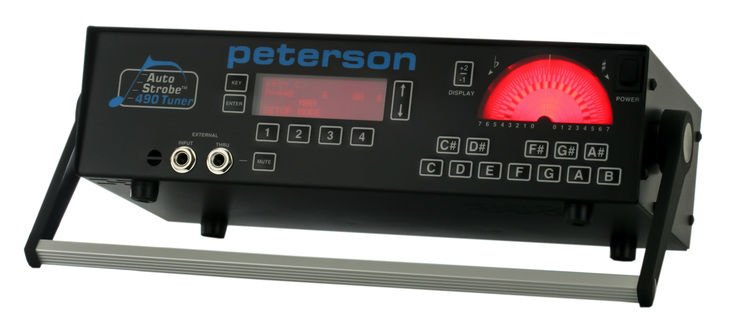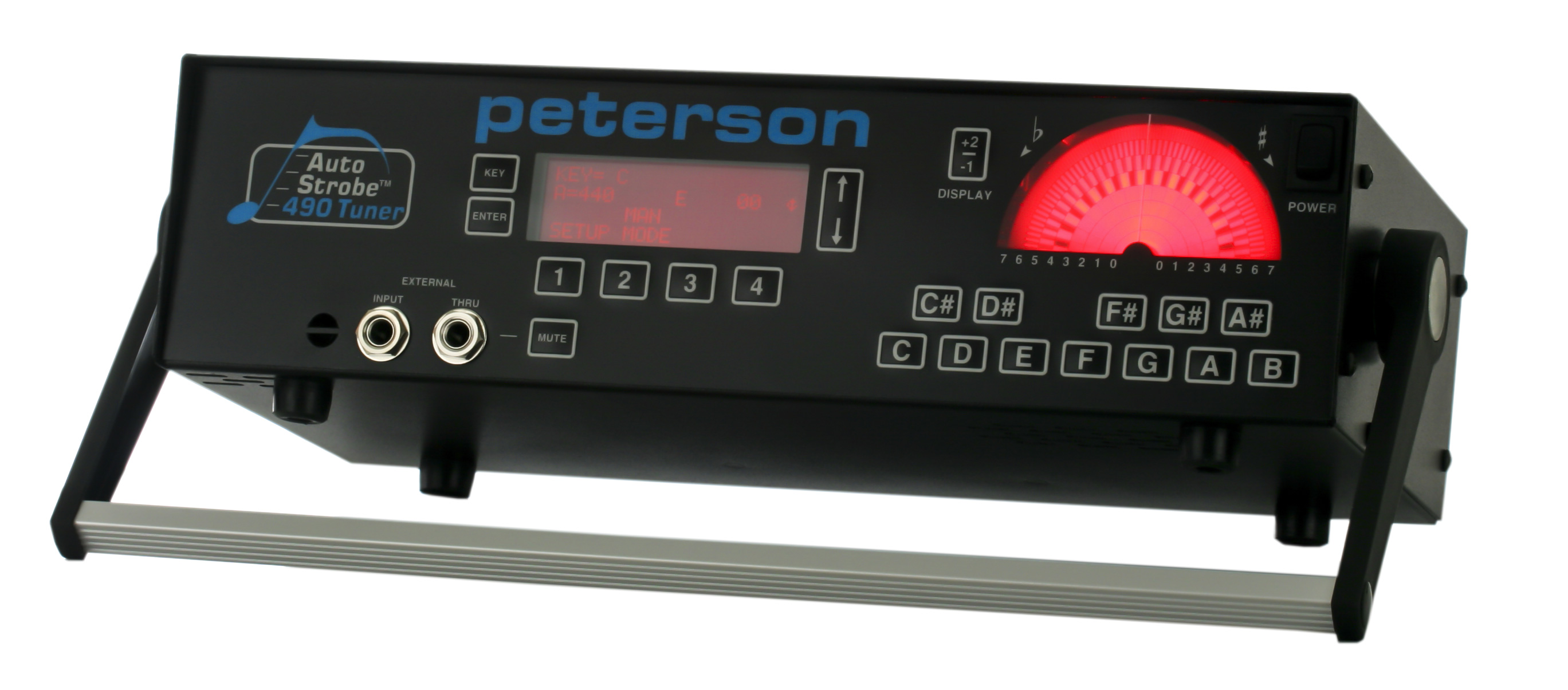

#Peterson autostrobe 490 strobe tuner generator
The first method of tuning is to do so by ear, comparing the sound from some software generator and from the bar itself. A specific interval, or frequency ratio, between the modes has to be preserved for the piece of vibrating metal to sound like a vibraphone! This topic has well been documented by the marimba builders, who shape the bars out of rosewood. The bar has to be ground down in specific places to alter the frequencies of the modes. Vibe bars are commonly tuned in the fundamental and first two overtones.

Another thing is the bars vibrate in multiple modes: the fundamental, lowest frequency mode determines the perceived pitch, and the higher modes are responsible for the overtones which shape the timbre of the sound. The reason is the process must be very accurate (definitely sub-1Hz) for the instrument to sound good. Two bars were missing, but I believed that while it might be too hard to make a full set, making just two might actually be possible.Īfter some research I found the main difficulty in making a bar is definitely its tuning.

Then, by a blind stroke of luck, I found a set of vibraphone bars quite cheaply available on line. Nothing that cannot be made out of wood, aluminium bars or pipes. An instrument like that consists of a frame, aluminium bars or "keys" and pipes called resonators. The reason behind it is very simple: The cost of a complete instrument is prohibitive, and used vibraphones are seldom available - if ever. A long time ago, me and my girlfriend (a percussionist) decided we want to build a vibraphone.


 0 kommentar(er)
0 kommentar(er)
